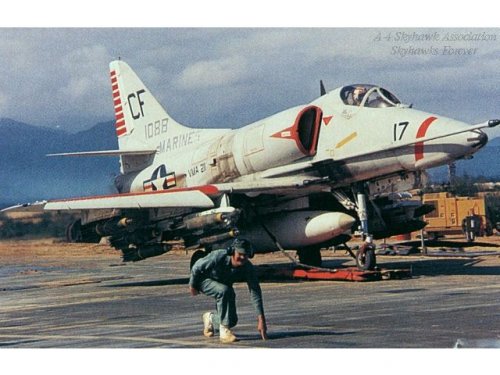Trackless Catapult for the Short Airfield for Tactical Support (SATS) for USMC Jets ~ 1960 NAEC
The CE-2 trackless catapult for use with the SATS short runway system is described. '"Short airfield for tactical support (SATS)"... consisted of a 1,200 m runway with an aluminum surface of interlocking lightweight metal alloy planking, a catapult and a carrier deck-type arresting gear...' Produced by the Naval Air Engineering Center.
Originally a public domain film from the US Navy, slightly cropped to remove uneven edges, with the aspect ratio corrected, and one-pass brightness-contrast-color correction & mild video noise reduction applied.
The soundtrack was also processed with volume normalization, noise reduction, clipping reduction, and/or equalization (the resulting sound, though not perfect, is far less noisy than the original).
(...)
Chu Lai Air Base was a military airport in Chu Lai, Vietnam, operated by the United States Marine Corps between 1965 and 1970. It was located near Tam Kỳ city, the largest city in Quảng Nam Province. Abandoned after the end of the Vietnam War, it was reopened as Chu Lai International Airport in 2005.
History
On 8 March 1965, the U.S. 9th Marine Expeditionary Brigade landed at Da Nang to protect the Danang Air Base from possible communist attack.
On 6 May units from the Army of the Republic of Vietnam (ARVN) 2nd Division and 3rd Battalion, 9th Marines secured the Chu Lai area. On 7 May, the 3rd Marine Expeditionary Brigade (United States) (3rd MEB), composed of the 4th Marine Regiment, 3rd Reconnaissance Battalion, elements of Marine Aircraft Group 12 (MAG-12) and Naval Mobile Construction Battalion 10 landed at Chu Lai to establish a jet-capable airfield and base area.
At first, only a "short airfield for tactical support (SATS)" was installed. The SATS consisted of a 1,200 m runway with an aluminum surface of interlocking lightweight metal alloy planking, a catapult and a carrier deck-type arresting gear. It also included a tactical airfield fuel dispensing system.
The base of soft sand at Chu Lai caused much difficulty with the installation of the SATS, but the first landing of an A-4 Skyhawk was made on 1 June 1965, by Colonel John D. Noble, Commanding Officer of MAG-12 from Marine All- Weather Fighter Attack Squadron 242 (VMA-225) landed. On the same day, the first combat mission was flown, led by Lieutenant Colonel R. W. Baker, CO of VMA-225. The aircraft took off using jet-assisted takeoff rockets on the partially completed runway as the Seabees continued lengthening the runway. It was involved in Operation Starlite on 18 August 1965, when the Marines made a pre-emptive strike on gathering Viet Cong forces who were preparing to attack the base.
By mid-October 1965, the base was home to more than 80 A-4 Skyhawks from MAG-12.
On the night of 27 October 1965 the Viet Cong penetrated the air base destroying 2 A-4s and severely damaging a further six. The Marines killed 15 of the attacking 20-man sapper squad.
In September 1966, a new 10,000 ft runway, with taxiways, was completed, just west of the SATS strip...
(...)
The Short Airfield for Tactical Support (SATS) is a rapidly constructed expeditionary airfield that can be erected near a battle area to provide air support for amphibious Marine forces... the Marine Corps has been trying several types of expeditionary airfields since early in World War II. Initial research used wooden planking for the runway surface. Later, during the Korean Conflict, aircraft actually landed on pierced steel mats,
known as “Marston matting.”
One of the more important breakthroughs in SATS research was the development of Short Expeditionary Landing Field (SELF)... the Marine Corps required that the field be designed to allow both launch and recovery (arresting) operations. These standards included the development of a land-based catapult and lighter arresting gear to replace the M-2 MOREST. In 1958, the runway specification was expanded to 2,000 feet and received
official SATS designation...

